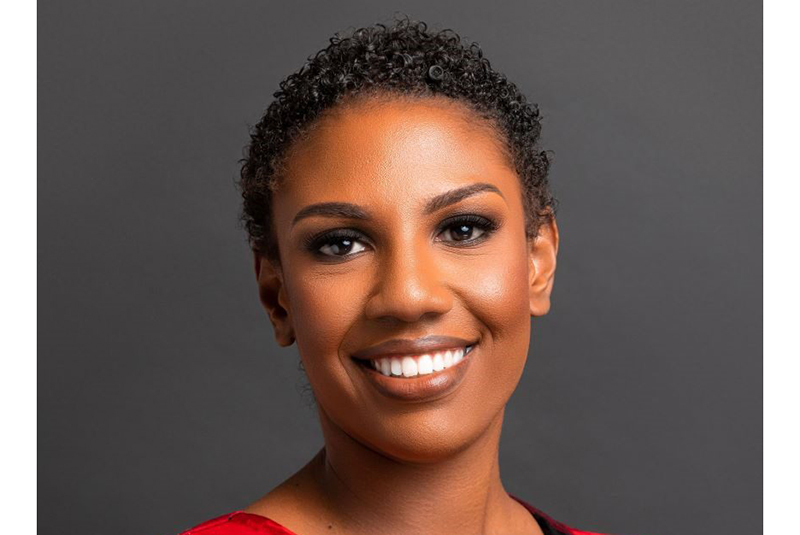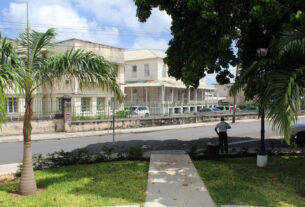BY JULIA RAWLINS-BENTHAM | JAN 10, 2023
Dr. Shelly-Ann Cox is the new Chief Fisheries Officer. (GP)
Dr. Shelly-Ann Cox is Barbados’ new Chief Fisheries Officer. She assumed duties on Tuesday, January 3. An experienced ocean professional and fisheries management specialist, the 35-year-old is no stranger to the industry.
She has 10 years’ experience in fisheries management and applied interdisciplinary climate research, a Ph.D. in Natural Resource Management from The University of the West Indies (UWI), Cave Hill Campus, and a BSc. with honours in Environmental and Natural Resource Management with Marine Biology from the UWI, St. Augustine Campus.
Dr. Cox has already outlined a five-pronged vision for the industry, designed to take it forward and raise its profile among the Barbadian public.
First on her list is raising the profile of the industry and changing the views of the public as it relates to seeing fishing as a career that is not held in high esteem.
Speaking during an interview with the Barbados Government Information Service, she stated that several careers existed in the fishing industry outside of fishing.
“There is boat building, marine mechanics, large fish processors, sports fishers, which take out people on charters. So, it is beyond just viewing it as an old fisherman going out on a little boat,” Dr. Cox said.
She also intends to bring about a change in market behaviour, to bring it in line with that seen in business places, and improve the environment.
The second area the Chief Fisheries Officer intends to tackle is the integration of digital technologies to increase efficiency in the sector.
Dr. Cox outlined that a number of the fishing vessels presently had equipment on board to assist them with finding the fish, while others were using satellite imagery to look at sea surface temperatures and sea surface heights to inform smart fishing.
But, she stated, the intention was to go a step further to integrate vessel monitoring systems, electric log books to document the catch and effort data and technology on board cameras.
“A lot of roll out in the next few months you will see are data collectors with tablets. You will see us using the technologies, like WhatsApp. We hope to be on social media and to use these technologies to improve efficiency, and then inform data-driven solutions,” she said.
Dr. Cox outlined that there was a lack of documentation for traditional knowledge, and efforts will be made to capture the history from the older fishermen, particularly in the areas of boat building, net knitting and the plaiting of certain bait baskets.
“We want to see those integrated in schools and training programmes to ensure they are not dying arts,” she stated.

Another priority area for the new Chief is engaging more young people to encourage them to become a part of the industry. Noting that most boat captains were 50 years or older, Dr. Cox said efforts will be made to recruit persons who are not just part of a coastal community but may have an interest and be willing to try fishing.
In addition, the female Chief Fisheries Officer also wants to see more women involved in fishing along all tiers of the value chain.
Meanwhile, she also cited the response to climate change and disasters in the industry as another area that required an “all hands on deck” approach. Dr. Cox highlighted challenges with the influx of Sargassum seaweed and a reduction in flying fish landing sites by over 50 per cent.
Updating the Fisheries legislation from the 1993 Act was also flagged as a priority area for the new head. “We are working assiduously towards building out a Sustainable Fisheries Management and Development Suite of Laws, which will have regulations attached with size limits for dolphins, swordfish, and some other important species that are threatened, like blue marlin. This is all part of our information system,” she pointed out.
Another part of the vision is to improve the standards in the industry to promote high fish quality and the traceability of the product from “hook to cook”.
“That would allow us to access premium export markets,” she said, noting that they hoped to resume connections between Canada and the UK, while those with West Africa were being explored.
Dr. Cox further shared the vision that she saw the fishing sector moving from 0.07 per cent of the gross domestic product to five per cent within a 10-year timeline.




